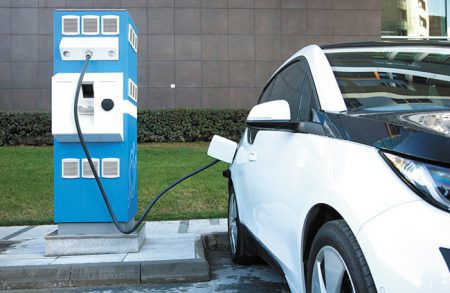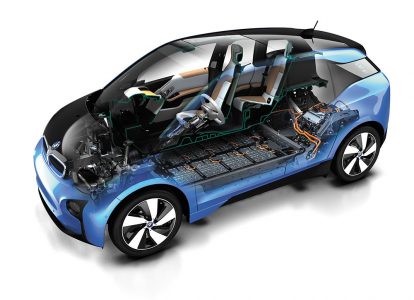The eco-dream of the ’90s is alive in the electric car

I haven’t bought gas in a year. Yes, you read that right. Go ahead and let that sink in a bit.
Last April, when I was looking for a new ride, my wife told me I should try an electric car. Why not? Skeptically, I tested a used BMW i3, and it was like going out to take a look at a puppy. Of course we brought it home.
You should know that my first car was a Chevy Celebrity — probably the least sexy car to come off an American production line in the past 50 years. So I was overdue, but who knew the solution to my midlife crisis would look more like a golf cart than a Mustang?
A year in, I can tell you it’s the coolest car I’ve owned — the technology makes you feel like you’re driving around inside an iPhone. It’s also an instant conversation starter. “What is that thing?” asks the dude in the parking lot or the woman working the drive-through window.
“It’s an electric car,” I say. “Did I mention that I haven’t bought gas for it in a year?”
What I didn’t realize at first was that the simple act of driving an electric car is kinda subversive. Lots of powerful people don’t want us to go electric. Sticking with gasoline to power our lives is part economics, but part unfair play, as oil-industry fat cats have long pulled the levers of power to kill the dream of emission-free travel.
There were electric cars going all the way back to the dawn of the automobile, but the concept was put on the shelf as Henry Ford’s factories dictated the future of the industry.
Then in the 1990s, with the dawning realization that our cars were like cigarettes, choking our planet’s health, electricity got another look. Starting in 1996, GM built more than 1,000 prototype EV1 vehicles, and celebrities and other energy rebels started leasing them. (As a test vehicle, they couldn’t buy them.)

The test was going well — too well, and those big-oil folks, some claim (as documented in the 2006 film Who Killed the Electric Car?) got nervous. The project was not only ended, but the cars were repossessed by GM and nearly all of them were crushed into oblivion.
Instead GM doubled down on the all-American, gas-guzzling SUV. Meanwhile, America changed. We bought a lot of SUVs, sure, but we also learned about some nasty things that some of the money we were spending on foreign oil was being used to fund. The growing desire to clean up our carbon footprint led Toyota to launch the Prius hybrid; in 2008 Elon Musk sold his first Tesla. In 2009, outgoing GM CEO Rick Wagoner said his biggest mistake was killing the EV1.
And in a sign of how far the tables have turned, last week Tesla surpassed Ford in total market value — and is only $3 billion behind General Motors. Here in 2017, driving an electric car isn’t so subversive any more.
Read more: Inlander
